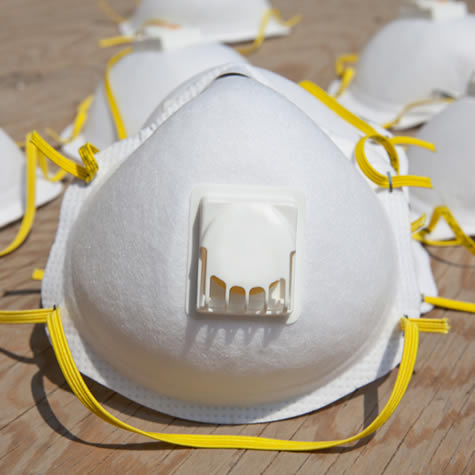Quality Asbestos Training Courses In Bridgend
Non-Licensed Asbestos Removal Training in Bridgend
Asbestos pops up all over the place in buildings across the UK. It was so widely used it is often one of those materials we need to be trained to work with.
Bridgend invested nearly 60 years in using asbestos containing materials within the fabric of its buildings. This has contributed to the awful legacy of ill health, disease and death amongst UK workers. At the last count 5,500 people were losing their lives each and every year to asbestos conditions.
Book Asbestos Training Today
Give us a call to discuss running a non-licenced asbestos training course for you at your premises in Ashford
Asbestos Training in Bridgend
Whether you are an electrician, a roofer or a grounds-worker, it is highly likely certain aspects of your work in Bridgend bring you into contact with asbestos containing materials. Asbestos training courses, available in Bridgend, help teach you to work on these products in line with the Control of Asbestos Regulations 2012. Non-licensed training will ensure you have the knowledge to not only work with asbestos safely, but how to deal with all the other issues around it like method-statements, disposal and transport to name a few.
Bridgend Asbestos Courses – Non-Licensed Removal Training
By taking part in an accredited training session in Bridgend, you are assured of a quality service as our course has been externally audited. This verification of compliance with the legal requirements has been carried out by the Independent Asbestos Training Providers (IATP). Our course is certified to meet their standards.

Asbestos Training courses run in Bridgend, under the IATP accreditation, are 1-day in duration and include asbestos awareness in the syllabus. This avoids the longer and more costly route stipulated by UKATA saving you both time and money. As a further advantage, Fit2Fit accredited face fit testing is also available as part of the course.
About Bridgend
Bridgend, Welsh Pen-y-bont Ar Ogwr, town and urban area (from 2011 built-up area), Bridgend county borough, historic county of Glamorgan (Morgannwg), southern Wales. It is situated on the River Ogmore, a short distance upstream from the Bristol Channel, and is the administrative centre of the county borough.The town has grown up on the site of medieval riverside twin villages (Oldcastle and Newcastle) with a 12th-century castle and 15th-century hospice; a stone bridge was built over the river about 1435. Historically, Bridgend has been the market town for the western Glamorgan lowland and the valleys immediately north. In addition the towns industrial base was expanded after World War II with the conversion of a wartime ordnance factory into a large industrial estate, and the Ford Motor Company opened an automobile engine factory southeast of the town. Pop. (2001) town, 13,950; urban area, 39,429; (2011) town, 14,912; built-up area subdivision, 46,757.Prior to 1836, the provisions market was held under the arches and on the steps of the first Town Hall in High Street (later Dunraven Place). The livestock market was also unhygienically held there in the surrounding streets and even worse the slaughtering often took place there on the spot! All at the same time!The Jolly Brewer (now the Riverside Tavern) in Brewery Lane was first built in the mid-1790s as the residence of the manager of the new and up-to-date woollen mill and was named as Cae-Felin (Millfield). After, the mill became the Brewers family residence and re-named the Brewery House. This name was retained when it became a public house in the 1920s. When its owners, Courage (Western), were seeking to renovate the building and re-name it in the late 1970s, they requested information on its history which was supplied to them. They professed great interest in its history and the suggestion that it should be re-named The Millfield public house then promptly renamed it The Jolly Brewer.In medieval times a significant event in the religious life of the South Wales community was a pilgrimage to the shrine of St. David (Pembrokeshire), an event which took a long time to complete over a very long distance covered mostly on foot, in changing weather conditions. At various points en route were certain churches and religious houses where the pilgrims could pause for shelter, rest and refreshment. One such point was St. Leonards Newcastle (now St. Illtyds).The pilgrims came along the old route of Ewenny to Laleston via the New Inn Bridge (Dipping Bridge) through Newbridge Fields and Sunnyside making for Newcastle Hill. Approaching the foot of the hill were three Inns, where the more affluent pilgrims could stay the Cross Keys (Keys of St. Peter and emblem of the Vatican); the Angel (the guardian angel watching over the Pilgrims on their journey) and the Lamb and Flag (named from the Crusader emblem of the Lamb with the Crusaders Cross flag over his shoulder).Nowadays, the Cross Keys has been demolished, the Angel (now The Wicked Lady) only remains on the site (a much later building) and the Lamb and Flag is now a pair of private houses.The poorer pilgrims who could not afford to stay at an Inn went to the Church House (later wrongly known as the Hospice of St. John) for rest and refreshment. Monks from Margam Abbey would have been there on pilgrimage duty to tend to the travellers before they continued on their way to St. Davids.Traditionally, the double-level stone benches in the porch were for the pilgrims sitting on the upper stones with their feet on the lower ones and the monks washed and bathed their weary and dirty feet ritually as Christ washed the feet of his disciples.World War II Prisoner of War Camp No. 198, Island Farm, Bridgend was situated on the A48 By-pass to the south of the town. Prior to its use as a PoW camp in November 1944, it in turn housed Ordnance factory workers and American soldiers. During its four year term, it in total detained almost 2,000 German officers, the most famous of whom was Field Marshall Larl von Rundstedt.On 10th March 1945, 67 prisoners tunnelled their way out of the camp within eight days they were all recaptured! The escape hut, number nine, is retained under a Preservation Order; the rest of the camp has been demolished to make way for the expansion of the Bridgend Science Park.Take a stroll through the Rhiw Shopping Centre and as you approach the intersection of the L-shaped arcade, look up and see the old Bridgend Market bell, suspended from the roof above. Now 173 years old it had lain in store and deteriorating in the County Borough Councils yard, Maesteg, since 1970 when the old market was demolished to make way for the Rhiw Development. The alertness of the Bridgend Civic Trust and the involvement of the Centres owners resulted in the bell being sited in its present position. The unveiling ceremony took place on St. Davids Day, 1996.





